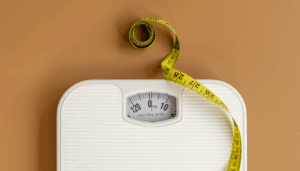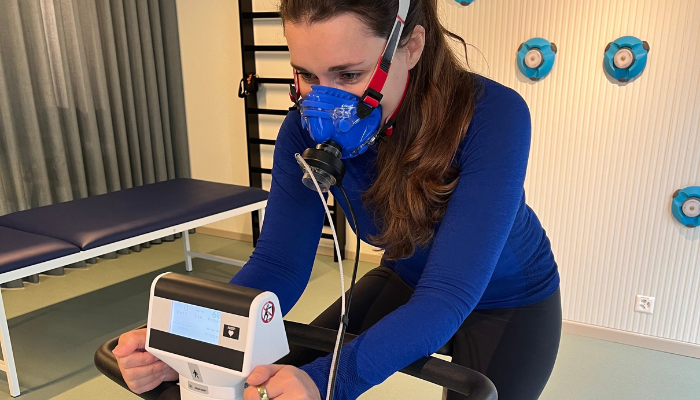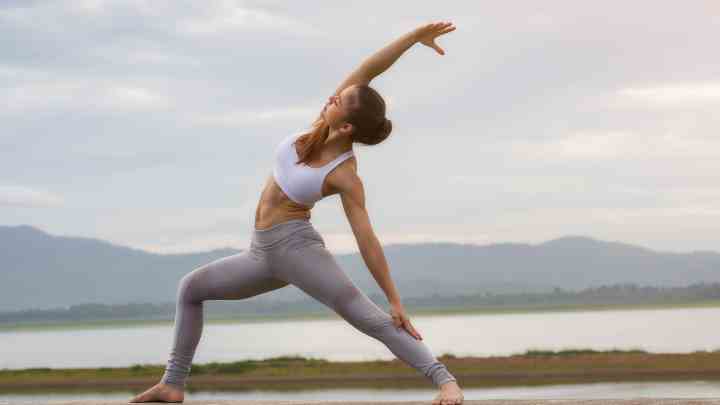How fit you are—especially in terms of your heart and lungs—can be directly determined by your body’s ability to use oxygen when you’re pushing yourself to the limit.
Maximal Oxygen Uptake, or VO2 max, do serve as a clear indicator of your physical performance capacity, but it has also been identified as a strong and independent predictor of overall mortality risk and disease-specific outcomes.

In Avea article, we’re diving into why VO2 max matters for everyone, not just athletes. We’ll look at how our body uses oxygen and why that’s important for our health. Plus, we’ll share some tips on how to boost your VO2 max with exercises that make a real difference. Obtain science-backed ways to improve your VO2 max and boost your longevity.
In this article
Free guide to reverse your biological age

- Master the science of rejuvenation.
- Apply proven tips to turn back the clock.
- Transform your health with top longevity specialists.
What is VO2 max?

VO2 max represents the maximum amount of oxygen a person can use during intense activities, like running or cycling, and is determined by the body’s ability to deliver oxygen to muscles.
VO2 max is the peak of your body’s oxygen-using capability during vigorous activity. Think of it as the ultimate test of your cardiovascular and respiratory systems’ synergy when you’re pushing your limits through exercise.
The term was born in 1923, from the pioneering work of Hill and Lupton[1]. It signifies an upper limit that no amount of training will break through. It’s the threshold where your body says, “That’s the most oxygen we can process, no matter how hard we push!”
Oxygen is crucial for our muscles as it helps them meet their energy needs. When our muscles reach their maximum capacity for using oxygen (aerobic capacity), they switch to a backup energy system that doesn’t require oxygen, known as anaerobic energy.
This pathway leads to the build-up of lactate, a substance you’re probably familiar with as the burn in your muscles during intense exercise.
The journey of oxygen from a deep breath to powering your muscle fibres is complex, involving efficient lungs, a strong heartbeat, and the effective transport of oxygen in your blood through hemoglobin. These components combine to create a measure of your aerobic capacity: the Fick principle[2].
It captures the combined peak performance of your lungs, heart, and muscles during intense physical activities.
Why is VO2 important?
Understanding VO2 max not only offers insight into your current fitness level, but also provides a benchmark for the efficiency of your body’s oxygen transport system — an essential aspect of overall health, not just athletic performance.
VO2 max values for men and women are typically as follows:


VO2 max can be very high in elite athletes (over 90 ml/kg/min) and much lower in the elderly (below 20 ml/kg/min), indicating how our ability to deliver and use oxygen changes as we age.
How is VO2 max measured?
The difference in oxygen levels between the air you inhale and the air you exhale indicates how much oxygen your body is using.
VO2 is measured in liters of oxygen consumed per minute and may be expressed in units of liters per minute (liters/minute). Tests are typically done in a lab setting, increasing in intensity over time, using either a treadmill or a bike.
You’d wear a mask linked to a device that measures breathing and oxygen/carbon dioxide levels, and a chest strap to monitor heart rate. The test lasts around 10-20 minutes.
VO2 max is reached when oxygen use levels out despite harder work, signaling a shift from aerobic to anaerobic metabolism, leading to muscle fatigue and the end of the test.
Key influences on VO2 max
Here’s the key point; VO2 max will differ for each one of us.
For the average person who is sedentary, VO2 max values are typically around 35 to 40 mL/kg/min for men and 27 to 30 mL/kg/min for women.
These figures can be improved through training, but there are certain factors that come into play, including:
- Age: Your VO2 max peaks by your 20th birthday and may decrease by as much as 30% by the time you reach 65.
- Gender: While elite female athletes often surpass men in VO2 max scores, after adjustments for body size, blood volume, and haemoglobin content, men’s VO2 max is generally 20% higher.
- Altitude: The air gets thinner the higher you go. Athletes might see their VO2 max reduced by 5% for every 1,524 metres (approximately 5,000 feet) of elevation gain.
- Fitness level: Those with higher levels of fitness typically have higher VO2 max values, showing the importance of consistent exercise in enhancing aerobic capacity.
Ageing and VO2 max
Maintaining a certain level of VO2 max is essential for independent living. For example,
- Dressing yourself requires a VO2 max of at least 12.
- Standing up from the toilet needs a VO2 max between 12-13.
- Walking and maintaining mobility requires a VO2 max of 13-14.
And ageing does not really help…

From the age of 30, VO2 max typically falls by around 10% every ten years.
VO2 max naturally declines from around the age of 25, at a rate of about 7% per decade for women and 10% for men.
Endurance training can start this decline from a higher baseline, reducing the impact of ageing, disability, and mortality.
A study found that for middle-aged men, an increase in VO2 max was linked to a 9% reduction in the risk of death, highlighting the importance of keeping fit throughout the years.
A minimum VO2 max level is necessary for an independent lifestyle and survival; falling below this level can lead to serious health issues and eventually death.
Ageing and lack of physical activity can create a vicious cycle that worsens oxygen delivery and use, particularly affecting those with heart or lung diseases.
Engaging in appropriate exercise programs is crucial for breaking this cycle and maintaining good health.

Skeletal muscles make up about 40% of our total body mass and start to decline by 3–10% every ten years from around the age of 25.
Aside from enabling an active lifestyle, a high VO2 max will reduce your risk of disease—research shows that VO2 max is strongly correlated with a longer lifespan.
Peter Attia
Why is exercise important?

Did you know that physical inactivity can be considered a form of pathology?
The benefits of exercise include:
- improved cardiac output
- increased blood volume
- development of muscle blood vessels
- enhanced muscle mitochondrial volume and function
- a shift towards more oxidative muscle fibres
If you’re a health-geek like us, you might be wondering how regular exercise may boost physiological measures, such as the increase in maximal oxygen uptake (VO2 max).
The effect of training
Training and VO2 max
VO2 max has a strong genetic basis but can still be significantly improved at any age with regular endurance training, by about 15–20% or 0.5 litres per minute.

This means that with regular training, a 70-year-old could have the VO2 max of an untrained 50-year-old.
Training and skeletal muscle
Both endurance and resistance training can quickly and significantly improve strength, muscle mass, aerobic and anaerobic capacity, and have positive effects on the cardiovascular and respiratory systems in healthy adults.

Just six weeks of resistance training can boost strength by 50% in sedentary elderly people.
This type of training activates satellite cells for muscle repair and growth, and enhances mitochondrial biogenesis, which improves muscle oxygen use and boosts VO2 max.
While resistance training is best for increasing muscle mass and strength, endurance training is the top choice for enhancing cardiorespiratory fitness (CRF).
| Endurance exercises | Resistance exercises |
|---|---|
| Brisk walking or jogging | Squats |
| Yard work (mowing, raking) | Deadlifts |
| Dancing | Bench press |
| Swimming | Pull-ups |
| Biking | Lunges |
| Climbing stairs or hills | Bent-over rows |
| Playing tennis or basketball | Plank rows |
A 12-week endurance training program[3] can significantly increase VO2 max in both young and old people, through both better cardiac output and improved oxygen extraction by muscles.
Endurance training leads to better blood vessel supply to muscles and increased activity of key mitochondrial enzymes, allowing muscles to use fat more efficiently, save glycogen, produce less lactate, and thus improve exercise endurance. This enhanced exercise tolerance is crucial for daily activities, leisure, and training.
Training and the cardiorespiratory system
Muscle training is important for long-term exercise, but the heart and blood vessels are the main factors that limit VO2 max for both young and old people.
Short-term endurance training (as brief as six days) can enhance heart function, cardiac output (Qmax), and VO2 max, thanks to quick increases in blood plasma volume that improve heart filling and stroke volume.
Endurance training also increases the availability of nitric oxide, a key factor in reducing the effects of ageing on blood vessels.
So while ageing might be weakening our respiratory muscle strength and endurance, regular endurance exercise, especially with specific breathing muscle exercises, can help maintain or improve these muscles’ function, supporting better exercise tolerance and VO2 max.
How much exercise do you need?
Current guidelines suggest 75 minutes of high-intensity exercise or 150 minutes of moderate-intensity exercise weekly, aiming for 500–1000 METs/min/week.
Studies show even less exercise can be beneficial:
- A 5-minute run equals a 15-minute walk, and a 25-minute run equals a 105-minute walk for reducing mortality risk.
- Running for 5–10 minutes daily can lower the risk of death from any cause by 30% and from heart disease by 45%[4].

High-intensity exercise is a time-efficient way to boost health and lifespan compared to longer, moderate workouts.
Muscles are not only for looks.
- Strong muscles are linked to lower risk of death from all causes and heart disease, even after considering cardio fitness and factors like age and smoking.
- In older adults, strong handgrip is associated with lower mortality risk, especially in women.
- Resistance training, done at least twice a week on non-consecutive days, improves muscle strength, mobility, and muscle mitochondria function—important for older adults and those with muscle weakness.
- For muscle growth, aim for 60–80% of your one-rep max, with three to six sets of 10–15 reps per muscle group each week.
Both endurance and resistance training offer significant health benefits, and even small amounts of exercise can contribute to a longer, healthier life.
Discover the top exercises for longevity.
Measuring VO2 max at home
Although laboratory equipment delivers the most precise VO2 max readings, you can still obtain dependable estimates through simpler means:
- For a practical home test[5]: Walk as quickly as you can cover 1 mile without running. Time yourself with a stopwatch. Upon completion, immediately stop the timer and count your pulse for 15 seconds. You’ll then apply a specific formula to estimate your VO2 max.
VO2 max = 132.853 – (0.0769 x your weight in pounds) – (0.3877 x your age) + (6.315 if you are male or 0 if you are female) – (3.2649 x your walking time) – (0.1565 x your heart rate at the end of the test)
- Wearable technology: Smart devices use heart rate and movement data to approximate your VO2 Max, providing a convenient alternative to formal testing. Cardio fitness on Apple Watch is an estimation of a user’s VO2 max in ml/kg/min, made based on measuring a user’s heart rate response to physical activity.
The best way to increase your VO2 max
References












